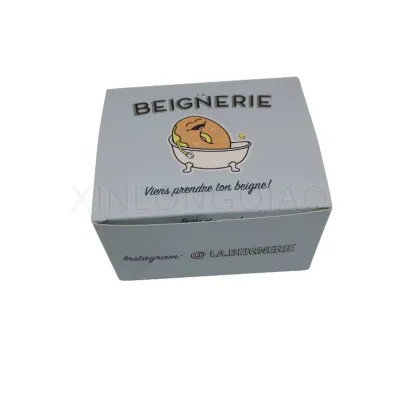Cardboard vs. Corrugated Boxes: What's the Difference?
When it comes to packaging materials, cardboard and corrugated boxes are two commonly used options that might seem interchangeable at first glance. However, each has its own unique characteristics and applications. Let's delve into the differences between cardboard and corrugated boxes to help you make informed decisions for your packaging needs.
Cardboard: A Versatile Option
Cardboard is a broad term that refers to a heavy-duty paper-pulp-based material. It comes in various thicknesses, making it suitable for different purposes. Cardboard boxes are commonly used for lightweight products, such as cereal boxes, shoeboxes, and packaging for small consumer goods.

Pros of Cardboard Boxes:
Cost-Effective: Cardboard boxes are often more cost-effective compared to corrugated boxes, making them an attractive option for businesses with budget constraints.
Printability: Cardboard is easy to print on, allowing for vibrant and detailed graphics. This makes it an ideal choice for packaging that requires attractive branding.
Cons of Cardboard Boxes:
Limited Strength: Cardboard is not as strong as corrugated material, making it less suitable for heavy or fragile items.
Environmental Impact: While some cardboard is recyclable, it may not be as eco-friendly as corrugated material, depending on the specific type and coating.
Corrugated Boxes: Strength and Durability
Corrugated boxes are engineered to provide strength and durability, thanks to their construction. They consist of three layers – an inside liner, an outside liner, and a corrugated medium sandwiched between them. This construction enhances the box's resistance to pressure and impact, making it suitable for heavier items and long-distance transportation.
Pros of Corrugated Boxes:
Strength: The layered construction of corrugated boxes provides excellent strength and protection for goods during shipping and handling.
Further reading:Children's Book Printing. Explore Size, Layout and Paper Choices
25 Questions to Spark Book Discussions with Young Readers
What Are the Advantages of Design for Kids Book?
The Best Places to Buy Custom Printing Online and In-Store
Which is cheaper UPS or USPS?
How to Choose best tea packaging?
What is Print Design?
Versatility: Corrugated boxes come in various grades, allowing businesses to choose the right level of strength for their specific packaging needs.

Cons of Corrugated Boxes:
Cost: Corrugated boxes are generally more expensive than cardboard boxes, which may impact the budget of smaller businesses.
Printability Challenges: While corrugated material can be printed on, it may not offer the same level of print quality as cardboard. Graphics may not appear as sharp or vibrant.
Choosing the Right Option for Your Needs
The decision between cardboard and corrugated boxes ultimately depends on the specific requirements of your products. Consider factors such as weight, fragility, budget, and branding needs when making your choice.
In the cardboard vs. corrugated boxes debate, there is no one-size-fits-all answer. While cardboard boxes are cost-effective and visually appealing, corrugated boxes offer superior strength and durability. It's crucial to strike a balance between these factors to meet the unique needs of your packaging requirements.
Whether you opt for cardboard or corrugated boxes, finding a reliable supplier is essential. If you have questions or need assistance in choosing the right packaging solution for your business, don't hesitate to contact us. Our team is dedicated to providing expert advice and high-quality packaging solutions tailored to your specific needs.
Further reading:Personalized Books & Frames for Displaying Kids’ Art
ARTKIVE
How do I turn my kids artwork into a photobook?
Order Business or Personalized Postcards Online - U.S. Press
The Best Photo Book Service
How Many Images Is Enough?
How many photos can you put in a Snapfish photo book?
- 0


